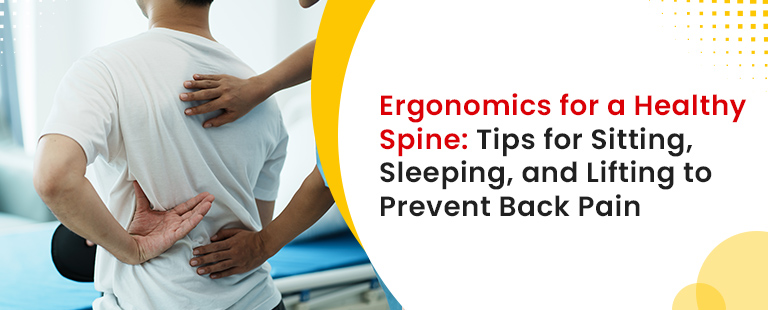Introduction
Regenerative medicine, also called ortho biologics, is a relatively new type of technology that is actively being used in the field of orthopedics to treat several different types of musculoskeletal injuries. These treatments are usually recommended when an orthopedic injury has failed to respond to traditional non-surgical treatments and also as a means to avoid surgery.
In this article, we will be discussing in detail how regenerative medicine helps in treating orthopedic conditions.
Uses of Regenerative Medicine in Orthopedics
Orthobiologics are the therapies that are developed from natural or biological substances and can be used by orthopedic surgeons in the following cases:
- To help relieve pain and some other symptoms associated with some orthopedic conditions like osteoarthritis (degenerative disease in which the tissues in the joint break down over time), thus delaying the need to undergo surgery.
- Improves the ability of the body to heal from an injury due to repetitive movements, like a tendon or ligament strain, fracture (broken bone), or cartilage injury.
- For treating tendinopathies, like a tennis elbow (a condition that develops due to the excessive use of tendons and muscles in the elbow).
- Helps treat avascular necrosis (when the bone tissue dies due to the temporary or permanent cutting off of blood supply to the bone)
- Helps in improving healing following an orthopedic surgery by repairing some tendons, which includes rotator cuff repair (surgery performed to repair a torn tendon in the shoulder region).
The use of orthobiologics in orthopedic conditions is known as orthopedic regenerative medicine.
Different Types of Regenerative Medicine Used in Orthopedics
Orthobiologics are obtained from different types of natural sources like humans, animals, or microorganisms. The orthobiologics can either be composed of proteins, sugars, nucleic acids, or a combination of these substances, or they could be made of living entities like cells and tissues.
Orthopedic surgeons can use regenerative medicine to help in the healing of bones, tendons, ligaments, cartilage, and muscles.
Although there are different types of regenerative medicines available, the two major types that are currently being used for orthopedics are as follows:
Stem Cell Therapy
In this procedure, the doctor extracts the patient’s own living cells from their body. These cells will then be injected into the damaged part of the tissue. The body will then respond by sending signals to heal and repair the affected area, thus promoting natural healing.
Stem cells are known as origin cells, which means that they can differentiate into other types of cells, like bone, cartilage, and muscle. This means that the stem cells can convert themselves into cells that your body requires to promote healing. For example, if a patient has a damaged ligament present in the knee joint and the doctor extracts stem cells from his body and injects them into the injured area, the stem cells will then differentiate into new ligaments and cartilage, which helps in repairing the injury more quickly compared to other traditional treatments.
Stem cell therapy can be useful in treating the following orthopedic conditions:
- Tendon injuries and tears
- Degenerative joint diseases
- Osteoarthritis
- Damage to the cartilage
- Ligament strains and sprains
- Injuries to the spinal cord
Platelet-Rich Plasma or PRP Therapy
In this type of therapy, the patient’s blood will be drawn by the doctor and then spun in a centrifugation machine to separate the platelets. The platelets are cells that contain growth factors that help in promoting tissue healing. These platelets will then be injected directly into the body’s injured area. The direct injection of the platelets helps accelerate the natural healing process of the body.
PRP therapy can help in treating ligament and tendon injuries such as rotator cuff tears and joint pain due to osteoarthritis. The therapy can also help accelerate the healing process following an orthopedic surgery, like ACL reconstruction (a surgery performed to reconstruct a ligament in the center of the knee).
Additionally, PRP therapy also helps in muscle recovery and treatment of sports injuries. Chronic orthopedic conditions like plantar fasciitis (inflammation of the fibrous tissue connecting the heel bone to the toes) can also be treated using PRP therapy.
Benefits of Regenerative Medicine in Orthopedics
Regenerative medicine offers several advantages over conventional orthopedic treatments. Some of the key benefits of regenerative medicine are as follows:
- Reduces the need for surgery
- Repair and regeneration of tissue
- Stimulation of the body’s natural healing process
- Speeds up the healing process
- Restoration of mobility
- Addresses the exact cause of pain and relieves pain
- Minimal or no downtime
Risks of Using Regenerative Medicine in Orthopedics
Just like any other medical procedure, there are some possible risks associated with the use of regenerative medicine in orthopedics. The common side effects associated with the procedure include the following:
- Swelling at the injection site
- Redness at the site of injection
- Pain and discomfort at the injection site
- Infection
- Allergic reaction to the injected materials
The side effects are usually mild and disappear on their own within a few days.
Conclusion
Regenerative medicine is a relatively new technique being used in the field of orthopedics but has proved to provide very good results in orthopedic conditions that have failed to respond to non-surgical conventional orthopedic treatments or in cases where surgery needs to be avoided. Stem cell therapy and PRP therapy are the most commonly used types of regenerative medicine in orthopedic conditions.
If you are suffering from any musculoskeletal problems, you should visit an orthopedic specialist immediately. The specialist will evaluate you thoroughly before preparing a proper treatment plan for you. You can ask your doctor about regenerative medicine options and whether they are likely to work in your case.



